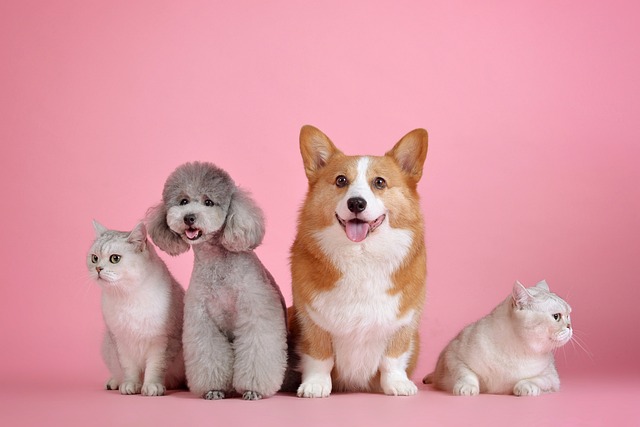In “Tackling Teething: The Puppy Chewing Phase,” you will find a comprehensive and detailed guide to help you navigate through this challenging stage of your new puppy’s life. Designed for individuals and families who have recently welcomed a furry friend into their homes, this informative article aims to educate and inform about the teething process in puppies. With a friendly tone and easy-to-understand language, this long-form article will provide you with valuable insights and practical solutions, ensuring that both you and your puppy sail smoothly through this chewing phase. So, let’s jump right in and discover how to tackle teething with ease!
Understanding Teething in Puppies
Bringing home a new puppy is an exciting and joyful experience for any individual or family.

What is Teething?
Teething is the process of a puppy’s baby teeth falling out and being replaced by their adult teeth. Similar to human infants, puppies are born without teeth. Around two to four weeks of age, their baby teeth start to emerge, and by eight weeks, they usually have a full set of 28 deciduous teeth. These baby teeth are not as strong as adult teeth and eventually fall out to make way for the 42 permanent teeth that will serve them throughout their life.
When Does Teething Occur?
Teething typically begins when a puppy is about three to four months old, although the exact timing may vary between individual puppies. The process continues for several months until all the baby teeth have been replaced by adult teeth. By the age of six to eight months, most puppies will have all of their adult teeth fully developed.
Why do Puppies Chew During Teething?
The teething process can be uncomfortable and sometimes even painful for puppies. Chewing is a natural instinct that provides them with relief.

Signs and Symptoms of Teething
It is essential for puppy owners to be aware of the signs and symptoms of teething. By recognizing these indicators, you can better understand your puppy’s needs and provide appropriate care and support during this stage.
Excessive Chewing
One of the most noticeable signs of teething is excessive chewing. You may find that your puppy is chewing on items they have never shown interest in before, such as furniture, shoes, or household objects. This behavior is a result of their strong urge to alleviate the discomfort in their gums caused by the teething process.
Bleeding Gums
Teething can cause the gums to become sensitive and tender. As the baby teeth start to fall out, you may notice slight bleeding or redness in your puppy’s gums. This is a normal part of the teething process, but if you notice excessive bleeding or severe inflammation, it is best to consult with your veterinarian for further evaluation.
Loss of Appetite
Some puppies may experience a temporary loss of appetite during the teething stage.

Protecting Your Belongings
During the teething phase, it is crucial to take steps to protect your belongings from your puppy’s chewing antics. By identifying potential chew targets, removing valuable items from reach, and using bitter sprays and deterrents, you can create a safe and chew-free environment for both your puppy and your possessions.
Identify Potential Chew Targets
Start by identifying items within your home that may be tempting for your puppy to chew on. Keep in mind that puppies explore the world with their mouths, so almost anything can become a potential chew target. Take special care to safeguard electrical cords, shoes, clothing, and any small or delicate objects that could pose a choking hazard.
Remove Valuable Items from Reach
Take proactive measures to remove valuable or sentimental items from your puppy’s reach. Store them in secure cabinets or high shelves where your puppy cannot access them. By doing so, you can prevent any accidental damage or destruction that might occur during the teething phase.
Use Bitter Sprays and Deterrents
Bitter sprays and deterrents can be an effective tool in deterring your puppy from chewing on inappropriate objects. These sprays often have a bitter taste that is unpleasant for dogs, encouraging them to avoid the sprayed items. Apply these sprays to furniture, baseboards, and any other areas that are at risk of being chewed. Always ensure that the sprays are safe for use around your puppy and follow the instructions provided.
Providing Appropriate Chew Toys
To redirect your puppy’s chewing behavior, it is crucial to provide them with appropriate chew toys. By choosing toys specifically designed for teething, offering varied textures and materials, and considering frozen or chilled toys, you can satisfy their chewing needs while protecting your belongings.
Choose Toys Designed for Teething
When selecting chew toys for your teething puppy, opt for toys that are specifically designed to soothe their gums and promote healthy oral development. Look for toys made of durable materials, such as rubber or nylon, that can withstand the pressure of chewing. Avoid toys that are too hard or too small, as they may cause injury or pose a choking hazard.
Offer Varied Textures and Materials
Puppies have different preferences when it comes to chewing. Some may enjoy softer textures, while others may prefer firmer options. Provide your puppy with chew toys that offer a variety of textures and materials. This allows them to explore different sensations and find what provides them with the most comfort. Consider toys with ridges, bumps, or grooves that can provide additional relief for your puppy’s irritated gums.
Consider Frozen or Chilled Toys
Frozen or chilled toys can provide extra comfort to teething puppies. The cold temperature helps numb the gums, reducing inflammation and providing soothing relief. Place a few chew toys in the freezer and offer them to your puppy when they seem particularly uncomfortable or eager to chew. However, always monitor your puppy while they are using frozen toys to ensure they do not chew excessively or hurt themselves.
Redirecting Chewing Behaviors
In addition to providing appropriate chew toys, it is essential to teach your puppy to redirect their chewing behaviors. By teaching the ‘leave it’ command, using positive reinforcement, and providing alternative activities, you can guide your puppy towards appropriate chewing outlets.
Teach the ‘Leave It’ Command
The ‘leave it’ command is a valuable tool when it comes to redirecting your puppy’s chewing behavior. Start by holding a treat in your closed fist and presenting it to your puppy. When they start to investigate or show interest in the treat, firmly say ‘leave it’ and wait for them to redirect their attention to you. Once they do, reward them with praise and a different treat from your other hand. With consistent practice, your puppy will learn to ignore items they are not supposed to chew on and focus on appropriate alternatives.
Use Positive Reinforcement
Positive reinforcement is a powerful tool in shaping your puppy’s behavior. Whenever you catch your puppy chewing on an appropriate chew toy, provide praise and rewards. This positive reinforcement helps reinforce the idea that chewing on designated items is desirable behavior. Conversely, if you catch your puppy chewing on something they shouldn’t, calmly redirect their attention to an appropriate chew toy and praise them when they engage with it.
Provide Alternative Activities
Puppies often chew out of boredom or a need for mental stimulation. Providing alternative activities can help redirect their focus and alleviate their chewing habits. Interactive puzzle toys, treat-dispensing toys, and engaging playtime sessions can keep your puppy entertained and occupied, reducing their urge to chew on inappropriate objects. Regular exercise and playtime are also important for maintaining their overall physical and mental well-being.
Promoting Dental Health
Proper dental care is not only important for your puppy’s oral health but also plays a crucial role in their overall well-being. By introducing brushing gradually, using dental chews and treats, and scheduling regular veterinary check-ups, you can promote good dental hygiene for your teething puppy.
Introduce Brushing Gradually
Brushing your puppy’s teeth is a key component of their dental care routine. However, it is essential to introduce brushing gradually to ensure a positive experience for both you and your puppy. Start by allowing your puppy to become accustomed to the taste and texture of toothpaste designed for dogs. Once they are comfortable with this, gradually introduce a soft-bristled toothbrush made specifically for pets. Begin by gently rubbing the toothbrush along their gums and teeth, gradually increasing the duration and intensity of brushing over time. Always use toothpaste formulated for dogs, as human toothpaste can be harmful to them.
Use Dental Chews and Treats
Dental chews and treats formulated specifically for dental health can be beneficial additions to your puppy’s oral care routine. These products are designed to help remove plaque and tartar buildup, freshen breath, and massage the gums. Look for products approved by veterinary professionals and choose appropriate sizes and textures for your puppy’s age, size, and breed. Remember to always monitor your puppy while they are enjoying these treats to ensure they chew safely and do not swallow large pieces.
Schedule Regular Veterinary Check-Ups
Regular veterinary check-ups are essential for monitoring your puppy’s overall health, dental health included. During these visits, your veterinarian can examine your puppy’s teeth and gums, identify any potential issues, and provide professional dental cleanings if necessary. They can also offer guidance on proper dental care techniques and recommend any additional treatments or products that may be beneficial for your puppy’s specific needs. Regular check-ups will help keep your puppy’s teeth and gums healthy throughout their life.
Reducing Discomfort
While teething is a normal process, it can be uncomfortable for puppies. To help alleviate their discomfort, you can use cold compresses, offer soothing chew toys, and consult with a veterinarian for pain relief options.
Use Cold Compresses
Cold compresses can help numb the gums and reduce inflammation during the teething phase. Wrap a clean and soft cloth around an ice cube or use a frozen teething toy and gently apply it to your puppy’s gums for a few minutes. The cold temperature helps soothe the discomfort and provide temporary relief. However, ensure that the compress is not too cold or applied for too long, as this can cause discomfort or damage to your puppy’s sensitive gums.
Offer Soothing Chew Toys
Soothing chew toys can provide relief to your teething puppy. Look for toys made of soft rubber or silicone that can be filled with water and frozen. The cold temperature will help numb their gums, while the soft texture provides gentle pressure and massage. Always choose toys that are of an appropriate size and durability for your puppy to prevent choking or ingestion hazards.
Consult with a Veterinarian for Pain Relief Options
If you find that your puppy’s discomfort during the teething phase is severe and persistent, it is best to consult with your veterinarian for pain relief options. They may recommend over-the-counter pain medications formulated for dogs or alternative methods to help ease your puppy’s discomfort. Remember to never give your puppy any medication without consulting with a veterinarian first, as some human pain medications can be toxic to dogs.
Establishing a Routine
Establishing a routine is essential for your teething puppy’s overall well-being. By maintaining a consistent schedule, providing regular exercise, and using crate training, you can create a structured environment that promotes healthy development and reduces stress and anxiety.
Maintain a Consistent Schedule
Puppies thrive on routine and predictability. Establishing a consistent schedule for meals, playtime, potty breaks, and rest periods helps your puppy feel secure and reduces anxiety. Consistency also allows you to monitor your puppy’s behavior more effectively and identify any changes or concerns that may arise during the teething phase.
Provide Regular Exercise
Regular exercise is crucial for your teething puppy’s physical and mental well-being. Engage in age-appropriate activities that provide mental stimulation and physical exercise. Play fetch, go for walks, or engage in interactive play sessions to help channel their energy and prevent destructive chewing behaviors. However, be mindful not to overexert your puppy, as excessive physical activity can be detrimental to their growth and development.
Use Crate Training
Crate training can be a helpful tool during the teething phase. A properly sized crate provides your puppy with a safe and secure space where they can take naps, rest, and have some alone time. When properly introduced, the crate becomes a positive association for your puppy and helps prevent them from engaging in destructive chewing behaviors when unsupervised. Ensure that the crate is comfortable, well-ventilated, and filled with appropriate bedding and chew toys to keep your puppy occupied.
Addressing Separation Anxiety
Many puppies experience separation anxiety, which can become more pronounced during the teething phase. To address separation anxiety in your puppy, you can practice gradual alone-time, implement positive reinforcement techniques, and seek professional help if necessary.
Gradual Alone-Time Practice
Separation anxiety can be alleviated by gradually acclimating your puppy to being alone. Start by leaving them alone for short periods of time and gradually increase the duration as they become more comfortable. Provide appropriate chew toys or interactive puzzles to keep them occupied during these alone-time sessions. By practicing gradual alone-time, you can build your puppy’s confidence and reduce their anxiety associated with being separated from you.
Implement Positive Reinforcement Techniques
Positive reinforcement is an effective method to address separation anxiety in puppies. Reward your puppy for calm behavior when you leave and return home. Create a positive association with your departures and arrivals by providing treats or praise. This helps your puppy understand that being alone is not a negative experience and that you will always return.
Seek Professional Help if Necessary
If your puppy’s separation anxiety persists or worsens despite your efforts, it may be beneficial to seek professional help from a qualified dog trainer or behaviorist. They can assess your puppy’s specific needs, provide guidance on behavior modification techniques, and develop a personalized plan to address their separation anxiety. Professional guidance can be invaluable in helping your puppy overcome their anxiety and lead a happier, healthier life.
Conclusion
Understanding teething in puppies is essential for any individual or family that has recently welcomed a new furry family member. By recognizing the signs and symptoms of teething, protecting your belongings, providing appropriate chew toys, redirecting chewing behaviors, promoting dental health, reducing discomfort, establishing a routine, and addressing separation anxiety, you can support your puppy during the teething phase and help them develop into a well-adjusted adult dog. With patience, love, and proper care, you can navigate the challenges of teething and enjoy a strong bond with your growing puppy.


